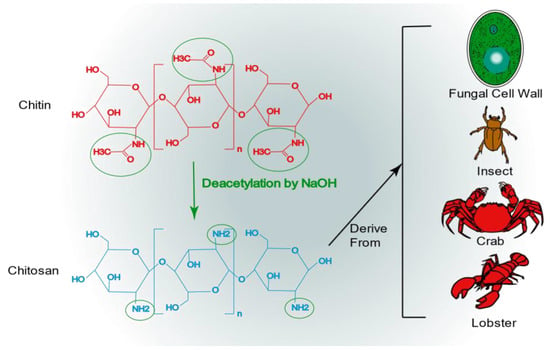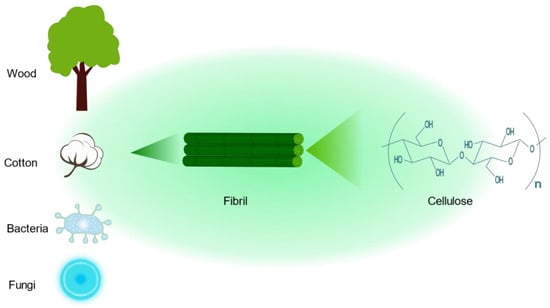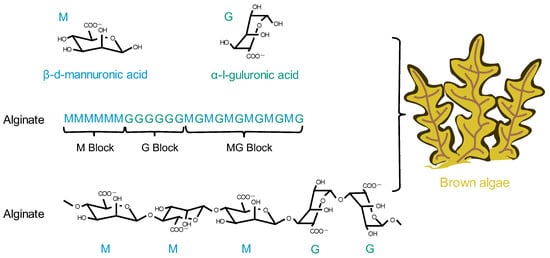肾脏疾病已成为全世界严重的公共卫生问题,其治疗和管理构成了巨大的全球经济负担。目前,主要的临床治疗方法不足以治愈肾脏疾病。在其发展过程中,纳米技术在肾脏疾病方面的应用显示出前所未有的潜力。然而,纳米技术具有成本高和生物利用度差等缺点。相比之下,生物聚合物不仅广泛可用,而且具有很高的生物利用度。因此,基于生物聚合物的纳米系统为肾脏疾病的治疗提供了新的有前途的解决方案。 Kidney disease has become a serious public health problem throughout the world, and its treatment and management constitute a huge global economic burden. Currently, the main clinical treatments are not sufficient to cure kidney diseases. During its development, nanotechnology has shown unprecedented potential for application to kidney diseases. However, nanotechnology has disadvantages such as high cost and poor bioavailability. In contrast, biopolymers are not only widely available but also highly bioavailable. Therefore, biopolymer-based nanosystems offer new promising solutions for the treatment of kidney diseases. This paper reviews the biopolymer-based nanosystems that have been used for renal diseases and describes strategies for the specific, targeted delivery of drugs to the kidney as well as the physicochemical properties of the nanoparticles that affect the targeting success.
1. 简介 Introduction
纳米技术是二十一世纪的新兴技术。纳米颗粒在治疗和诊断疾病中的应用是当前纳米技术研究的一个重要领域,称为纳米医学[14]。纳米颗粒是尺寸为1-100nm的颗粒,包括无机纳米颗粒、脂质纳米颗粒、碳基纳米颗粒、聚合物纳米颗粒和仿生纳米颗粒[15]。制备纳米颗粒的方法有很多,它们因纳米颗粒类型而异。常用的制备方法有脱溶剂、薄膜水合、微乳、共价交联、溶剂蒸发等[16,17,18]。用作药物递送系统的纳米颗粒可以增强药物的稳定性和溶解度,促进药物跨细胞膜的运输,并延长其循环时间以提高其安全性和有效性。此外,纳米颗粒可以帮助药物集中在疾病或损伤部位,同时最大限度地减少其不良反应[19]。迄今为止,各种纳米颗粒已被用作肾脏靶向药物递送的载体,为肾脏疾病的治疗做出了重要贡献,并显示出巨大的潜力。
Nanotechnology is an emerging technology of the twenty-first century. The application of nanoparticles in treating and diagnosing diseases is an essential area of current nanotechnology research, known as nanomedicine [14]. Nanoparticles are particles with a size of 1–100 nm, including inorganic nanoparticles, lipid nanoparticles, carbon-based nanoparticles, polymer nanoparticles, and biomimetic nanoparticles [15]. There are many methods for the preparation of nanoparticles, which differ based on nanoparticle type. The common preparation methods include desolvation, thin-film hydration, microemulsion, covalent crosslinking, solvent evaporation, and so on [16–18]. Nanoparticles used as drug delivery systems can enhance the stability and solubility of drugs, promote drug transport across cell membranes, and prolong their circulation time to boost their safety and effectiveness. Additionally, nanoparticles can help to concentrate drugs at the site of disease or injury, while minimizing their adverse effects [19]. To date, various nanoparticles have been used as carriers for kidney-targeted drug delivery, making important contributions to, and showing great potential for the treatment of renal diseases
生物聚合物是由生物体产生的聚合物。与合成聚合物相比,生物聚合物具有更好的生物相容性、生物利用度和生物反应性 Biopolymers are polymers produced by living organisms. Biopolymers have better biocompatibility, bioavailability, and bioreactivity than synthetic polymers [
42]
。这些优势在生物医学领域得到了广泛的应用。纳米技术和生物聚合物在基于生物聚合物的纳米系统中的结合显示出靶向药物递送的巨大潜力. These advantages have led to a wide range of applications in the biomedical field. The combination of nanotechnology and biopolymers in biopolymer-based nanosystems shows great potential for targeted drug delivery [
43,4443,44]
。基于生物聚合物的纳米系统特别有前途用于使用靶向药物载体治疗肾脏疾病。. The biopolymer-based nanosystems are particularly promising for the treatment of kidney diseases with targeted drug carriers
2. 壳聚糖Chitosan
壳聚糖是一种高度丰富的天然生物聚合物,来源于龙虾和螃蟹等甲壳类动物的外骨骼、昆虫和真菌细胞壁Chitosan is a highly abundant natural biopolymer derived from the exoskeletons of crustaceans such as lobsters and crabs, insects, and fungal cell walls [
80]
。壳聚糖是通过甲壳素脱乙酰形成的多糖,其化学结构由. Chitosan is a polysaccharide formed through the deacetylation of chitin, and its chemical structure consists of N-
乙酰葡糖胺和D-氨基葡萄糖单体组成(图1)。壳聚糖的分子式为acetylglucosamine and D-glucosamine monomers (Figure 4). Chitosan’s molecular formula is C
6H
11不411NO4X
2.
壳聚糖是在甲壳素与浓 Chitosan is formed after the N-deacetylation of chitin in reaction with a concentrated NaOH
溶液反应N-脱乙酰后形成的 solution [
81]
。脱乙酰后,与甲壳素相比,壳聚糖由于游离氨基而获得更高的水溶性和更好的化学势. After deacetylation, as compared to chitin, chitosan acquires a higher water solubility and better chemical potential due to the free amino group [
82]
。壳聚糖表面的氨基导致其正电荷. The amino group on the surface of chitosan results in its positive charge [
42]
。这对于药物输送到肾脏非常有意义,因为带正电荷的物质更容易通过肾小球滤过屏障运输. This is of great interest for drug delivery to the kidney, as positively charged substances are more easily transported across the glomerular filtration barrier [
63]
。随着技术的不断进步,第三代壳聚糖以壳寡糖的形式引入,壳聚糖成为一种可设计的生物活性化合物,大大提升了其应用前景. With continuous technological progress, the third generation of chitosan was introduced in the form of chitosan oligosaccharides, and chitosan became a designable bioactive compound, which greatly enhanced its application prospects [
83]
。目前,壳聚糖具有广泛的应用,不仅包括抗菌、抗肿瘤和抗氧化应用. At present, chitosan has a wide range of applications, including not only antibacterial, antitumor, and antioxidant applications [84
,85,–86]
,还包括药物递送,尤其是纳米形式 but also drug delivery, especially in its nanoform [87
,88,89–89]
。壳聚糖纳米颗粒易于生产,毒性低,高度稳定,生物相容性和可生物降解性。此外,壳聚糖纳米颗粒可以以受控的方式释放其封装的化学物质. Chitosan nanoparticles are easy to produce, have a low toxicity, and are highly stable, biocompatible, and biodegradable. In addition, chitosan nanoparticles can release their encapsulated chemicals in a controlled manner [
90]
。如前所述,低分子量的壳聚糖可以被肾脏中的梅加林受体选择性地吸收。因此,壳聚糖纳米颗粒和含有壳聚糖的杂交纳米颗粒都有效且选择性地分布在肾脏中。所有这些优点使壳聚糖纳米颗粒成为药物输送到肾脏的绝佳载体。. As previously mentioned, chitosan with a low molecular weight can be selectively absorbed by megalin receptors in the kidney. Consequently, both chitosan nanoparticles and hybridized nanoparticles containing chitosan are effectively and selectively distributed in the kidney. All these advantages make chitosan nanoparticles an excellent vehicle for drug delivery to the kidney.
图
Figure 1.
壳聚糖的化学结构及其起源。 The chemical structure of chitosan and its origin.
C
. Prajapati等人[91]合成了N-乙酰化的壳聚糖纳米颗粒,能够靶向肾脏包封百里醌(TQ)以治疗出血性膀胱炎。他们使用含有N-乙酰化壳聚糖,三聚磷酸盐,TQ和甲醇的离子凝胶技术成功制备了TQ纳米颗粒制剂。TQ-纳米颗粒的结构为球形,平均粒径为272.6hitosan nanoparticles have important applications not only in
m,聚合物分散指数为0.216,zeta电位为−20.7 mV。TQ纳米颗粒具有良好的生物利用度、水溶性和肾脏靶向性。TQ纳米颗粒的肾脏靶向是通过肾小管上皮细胞的megalin受体对N-乙酰化壳聚糖的特异性摄取而起作用的[92]。摄取后,药物在肾脏中达到最大积累,导致药物大量释放到膀胱中,从而导致出血性膀胱炎的治疗。
壳聚糖纳米颗粒不仅在出血性膀胱炎中具有重要应用,而且在从肾脏中去除有害活性氧( hemorrhagic cystitis but also in the removal of harmful reactive oxygen species (ROS
)方面也有重要应用。) from the kidney. M. Ahmad
等 et al. [
93]
以戊二醛为交联剂,通过离子交联法合成壳聚糖和姜黄素复合纳米颗粒。他们证明壳聚糖纳米颗粒可以作为生物吸附剂从溶液中去除镉或铜等离子。作者制备了粒径在 synthesized chitosan and curcumin composite nanoparticles through an ionic crosslinking method using glutaraldehyde as the crosslinking agent. They demonstrated that chitosan nanoparticles can have a strong effect as a biosorbent for the removal of ions such as cadmium or copper from the solution. The authors prepared nanoparticles with particle sizes in the range of 2
-40 nm范围内的纳米颗粒,具有良好的物理和化学稳定性,易于在水中分散。姜黄素是一种众所周知的天然抗氧化剂,当与壳聚糖纳米颗粒结合时,对肾脏中有毒金属镉诱导的氧化应激具有良好的改善作用。类似地,–40 nm, with good physical and chemical stability and easy dispersion in water. Curcumin, a well-known natural anti-oxidant, has a good ameliorating effect on oxidative stress induced by the toxic metal cadmium in the kidney when combined with chitosan nanoparticles. Similarly, M. Pang
等人 et al. [
94]
使用低分子量壳聚糖包封叶黄素和塞拉醇,以制备可输送到肾脏用于治疗急性肾损伤( used low-molecular-weight chitosan to encapsulate lutein and celastrol in order to prepare nanomicelles that could be delivered to the kidney for the treatment of acute kidney injury (AKI
)的纳米胶束。尺寸为). Nano micelles measuring 75.0 ± 5.0 nm
的纳米胶束具有一致的球形,zeta电位为 in size were created with a consistent spherical shape, a zeta potential of 20.0 ± 3.2 mV
,聚合物分散指数(PDI)为0.13±0.05。他们巧妙地通过酰胺键将柠檬康酸酐与低分子量壳聚糖连接,通过酯化反应将叶黄素与柠檬康酸酐连接起来,最后将脂溶性化合物塞拉醇添加到胶束的疏水核心中。此外,由于这些纳米胶束中存在酰胺键,可以在酸性条件下断裂,这些纳米胶束还具有PH敏感性,这有助于药物在细胞摄取后在溶酶体的酸性环境中快速释放。这些纳米胶束的肾脏靶向是由于低分子量壳聚糖可以被肾小管上皮细胞中的, and a polymer dispersity index (PDI) of 0.13 ± 0.05. They cleverly linked citraconic anhydride to low-molecular-weight chitosan through amide bonding, linked the lutein to citraconic anhydride through an esterification reaction, and finally added the lipid-soluble com-pound celastrol to the hydrophobic core of the micelles. Moreover, due to the presence of amide bonds in these nanomicelles, which can be broken under acidic conditions, these nanomicelles also possess PH sensitivity, which contributes to the rapid release of the drug in the acidic environment of lysosomes after uptake by the cells. The renal targeting of these nanomicelles is due to the fact that low-molecular-weight chitosan can be specifically taken up by megalin
受体特异性吸收,类似于肾脏特异性摄取TQ纳米颗粒的机制,如前所述 receptors in renal tubular epithelial cells, similar to the mechanism for the specific uptake of TQ-nanoparticles by the kidney, as mentioned previously [
95]
。纳米胶束的平均粒径为. The average particle size of the nanomicelles was 75.0 ± 5.0 nm
, 球形均匀, PDI为, with a uniform spherical shape, PDI of 0.27 ± 0.04
, zeta电位为, and zeta potential of 20.0 ± 3.2 mV.
通过近红外成像观察荧光标记纳米胶束在小鼠中的分布,结果表明,纳米胶束组的肾脏荧光强度较对照组更强,在肾脏中快速积累。
纳米酶是当前研究的焦点。纳米酶是具有类似酶活性的纳米材料,具有有效的催化活性和特定反应的特定机制 The distribution of the fluorescently labeled nanomicelles in mice was observed via NIR imaging, and it was demonstrated that the nanomicelle group had a stronger renal fluorescence intensity compared to the control group and showed rapid accumulation in the kidney.
Nanozymes are a focal topic of current research. Nanozymes are nanomaterials with an enzyme-like activity that have effective catalytic activity and a specific mechanism for a given reaction [
96]
。. Z. Liu
等 et al. [
97]
设计了一种用于治疗 designed an ultra-small nanoenzyme for the treatment of AKI
的超小纳米酶,他们利用壳聚糖、氯化钌(III)三水合物和乙酸,采用溶剂热法成功合成了平均粒径为2 nm的纳米酶。此外,纳米酶具有多酶样活性(超氧化物歧化酶(SOD),过氧化氢酶(CAT)和谷胱甘肽过氧化物酶(GPx)),并作为抗氧化剂有效清除肾细胞中的ROS以治疗AKI。这种纳米酶优异的抗氧化性能、生物稳定性、生物相容性和肾脏积累使其有望进一步应用于由ROS引起的其他肾脏疾病,如糖尿病肾病。, and they successfully synthesized the nanoenzyme with an average particle size of 2 nm using chitosan, ruthenium(III) chloride trihydrate, and acetic acid with a solvothermal method. In addition, the nanoenzyme possesses multien-zyme-like activity (superoxide dismutase (SOD), catalase (CAT), and glutathione peroxidase (GPx)) and acts as an antioxidant to effectively scavenge ROS in kidney cells for the treatment of AKI. The excellent antioxidant properties, biostability, biocompatibility, and renal accumulation of this nanoenzyme make it promising for further applications in other kidney diseases caused by ROS, such as diabetic kidney disease.
3. 纤维素Cellulose
纤维素是迄今为止最丰富、最常见和可再生的天然生物聚合物,它来源于木材、棉花、细菌和真菌 Cellulose is by far the most abundant, most common, and renewable natural biopolymer, which is derived from wood, cotton, bacteria, and fungi [
98,9998,99]
。纤维素是一种具有线性结构的多糖,由多个. Cellulose is a polysaccharide with a linear structure consisting of multiple D-
葡萄糖单元组成,通过β-1,4个糖苷键连接(图2)glucose units linked by β-1,4 glycosidic bonds (Figure 5) [
100]
。纤维素分子式为(. The cellulose molecular formula is (C
6H
10O
5)
n.
纤维素具有高度的生物相容性和可生物降解性,使其无毒 Cellulose has a highly biocompatible and biodegradable nature, making it non-toxic [
101]
。虽然纤维素不溶于水,这可能会限制其在药物递送中的应用,但可以通过特定的化学反应形成一系列纤维素衍生物,以提高其水溶性. Although cellulose is insoluble in water, which may limit its application in drug delivery, a series of cellulose derivatives can be formed through specific chemical reactions to improve its water solubility [
102]
。纤维素中有结晶区和无定形区域,纳米晶纤维素是具有纳米级尺寸的结晶形式的纯纤维素. There are crystalline and amorphous regions in cellulose, and nanocrystalline cellulose is pure cellulose in a crystalline form with nanoscale dimensions [
103]
。纳米晶纤维素的制备方法主要包括酸水解、使用浓有机酸酯化、(. The preparation methods of nanocrystalline cellulose mainly include acid hydrolysis, esterification using concentrated organic acids, (2
,2,6,6-四甲基哌啶-1-基)氧化丹基(TEMPO)介导的氧化、微生物或酶水解、高碘酸盐氧化,2,6,6-tetramethylpiperidin-1-yl)oxidanyl(TEMPO)-mediated oxidation, microbial or enzymatic hydrolysis, and periodate oxidation [
104]
。纳米晶纤维素是一种杆状颗粒,具有出色的长径比,宽度约为. Nanocrystalline cellulose is a rod-shaped particle with an excellent aspect ratio, with a width of approximately 5
-30nm,长度约为100-500nm–30 nm and a length of approximately 100–500 nm [
105]
。它还具有优越的轴向杨氏模量、高比表面积、高透明度和许多其他优异性能,. It also has superior axial Young’s modulus, high specific surface area, high transparency, and a number of other excellent properties, 参考文献References [
106,107106,107]
。因此,纳米晶纤维素不仅广泛用于药物输送,还广泛用于许多领域,例如造纸,食品生产和电子. As a result, nanocrystalline cellulose is widely used not only in drug delivery but also in many fields, such as papermaking, food production, and electronics [
108,109,110108–110]
。在肾脏中,具有高纵横比(. In the kidney, nanocrystalline cellulose with a high aspect ratio (>10
)的纳米晶纤维素与血流对齐,通过肾小球过滤,随后被肾单位从肾小管边缘重新吸收。由于递送平台的药代动力学特征,与纳米晶纤维素结合的药物被递送至肾小管细胞) is aligned with blood flow, filtered through the glomerulus, and subsequently reabsorbed by the renal unit from the tubular border. Due to the pharmacokinetic profile of the delivery platform, drugs bound to nanocrystalline cellulose are delivered to renal tubular cells [
111]
。因此,纳米晶纤维素在肾脏药物递送方面具有巨大的潜力。. Therefore, nanocrystalline cellulose has tremendous potential for renal drug delivery.
图
Figure 2.
纤维素的化学结构及其来源。 The chemical structure of cellulose and its sources.
纤维素纳米晶体由于其化学改性和生物相容性而在药物递送中具有广泛的应用,例如乳腺癌、肝癌和心肌疾病 Cellulose nanocrystals have a wide range of applications in drug delivery due to their chemical modifiability and biocompatibility, e.g., breast cancer, liver cancer, and myocardial diseases [112
,113,114–114]
。高磷血症是. Hyperphosphatemia is one of the major metabolic disorders in CKD
的主要代谢性疾病之一,晚期CKD患者的血清磷酸盐浓度与死亡率呈正相关, and serum phosphate concentration is positively correlated with mortality in patients with advanced CKD [
115]
。目前,. Currently, the treatment of hyperphos-phatemia in CKD
患者高磷血症的治疗主要以透析和口服磷酸盐结合剂为主。近日,张启萌等人研制出阳离子纤维素纳米晶治疗高磷血症,可大大降低血磷水平 patients is mainly based on dialysis and oral phosphate binders. Recently, Qimeng Zhang et al. developed cationic cellulose nanocrystals for the treatment of hyperphosphatemia, which can greatly reduce the blood phosphate level [
116]
。阳离子纤维素纳米晶体比普通未改性的纤维素纳米晶体具有更大的表面电荷,这使得它们能够更好地结合阴离子(如磷酸盐颗粒)。阳离子纤维素纳米晶体是通过将阳离子化剂(例如缩水甘油基三甲基氯化铵)掺入碱性激活纤维素纳米晶体的湿法和半干法工艺获得的. Cat-ionic cellulose nanocrystals have a much larger surface charge than ordinary unmodified cellulose nanocrystals, which enables them to better bind anions (such as phosphate particles). Cationic cellulose nanocrystals were obtained via the wet and semi-dry pro-cess incorporation of cationization agents (e.g., glycidyltrimethylammonium chloride) into alkaline-activated cellulose nanocrystals [
117]
。该研究的作者设计了阳离子纤维素纳米晶体,它是刚性棒状纳米颗粒,直径约为. The authors of the study designed cationic cellulose nanocrystals, which are rigid rod-shaped nanoparticles with a diameter of approximately 10
nm,长度约为150nm,比表面积大,zeta电位为62.3mv。阳离子纤维素纳米晶依靠静电吸引和离子交换反应吸附磷酸根离子,结合能力约为74.3mg/g,明显高于常用的磷酸盐结合剂(如碳酸钙,约39mg/g) nm, a length of approximately 150 nm, a large specific surface area, and a zeta potential of 62.3 mv. The cationic cellulose nanocrystals relied on electrostatic attraction and ion-exchange reactions to adsorb phosphate ions, with a binding capacity of approximately 74.3 mg/g, which is significantly higher than that of the commonly used phosphate binding agents (e.g., calcium carbonate, with approximately 39 mg/g) [
118]
。作者将这些阳离子纤维素纳米晶体用于慢性肾功能衰竭小鼠,模型小鼠的血清磷水平迅速下降至与正常小鼠相同的水平。阳离子纤维素纳米晶通过在肠道中结合磷酸盐来治疗高磷血症,有效改善肾脏的炎症浸润。在. The authors used these cationic cellulose nanocrystals in mice with chronic renal failure, and the serum phosphorus level of the model mice rapidly decreased to the same level as that of normal mice. The cationic cellulose nanocrystals were able to treat hyperphosphatemia by binding phosphate in the intestinal tract and effectively improved the inflammatory infiltration of the kidneys. In a study conducted by Sam Wong
等人进行的一项研究中,通过引入胺和碘取代基分别对纤维素纳米晶体上的伯羟基和仲羟基进行战略修饰,旨在作为肾脏的潜在药物递送平台 et al., strategic modifications of the primary and secondary hydroxyl groups on cellulose nanocrystals were performed through the introduction of amine and iodine substituents, respectively, were designed to serve as a potential drug delivery platform for the kidney [
119]
。纤维素纳米晶呈棒状形状,长度为. The cellulose nanocrystals had a rod-like shape with a length of 164.0 ± 20.3 nm
,直径为, a diameter of 10.52 ± 0.76 nm
,长径比为, and an aspect ratio of 15.97 ± 1.73
,具有良好的生物相容性和安全性,使其在肾脏中的特异性积累,静脉注射药物后23 h内积累1 and exhibited good biocompatibility and safety, which allowed for their specific accumulation in the kidney, with an accumulation of 23% IA/g
,存在 within 1 h after intravenous drug injection and the presence of 15% IA/g
。
在纤维素纳米晶体的合成、表征和生物相互作用以及各种疏水药物的成功负载等方面有大量广泛的研究。然而,关于使用这些药物治疗肾脏疾病的研究很少.
There are a large number of extensive studies on the synthesis, characterization, and biological interactions of cellulose nanocrystals, as well as the successful loading of various hydrophobic drugs. However, there are few studies on the use of these drugs for the treatment of renal diseases [
120,121120,121]
。例如,姜黄素是一种具有抗氧化特性的多酚化合物,可以掺入用阳离子表面活性剂十六烷基三甲基溴化铵改性的纤维素纳米晶体中,以结合大量的姜黄素,姜黄素的添加量范围为. For example, curcumin, a polyphenolic compound with antioxidant properties, can be incorporated into cellulose nanocrystals modified with the cationic surfactant cetyltrimethylammonium bromide to bind a large amount of curcumin, and the amount of curcumin added ranges from 80%
至96% to 96% [
122]
。此外,姜黄素作为一种抗氧化剂,在缓解氧化应激方面有很大的应用,如糖尿病肾病和. Moreover, curcumin, as an antioxidant, has great application in alleviating oxidative stress, such as diabetic nephropathy and AKI
[
123,124123,124]
。因此,具有一定修饰的纤维素纳米晶体在肾脏疾病的治疗中具有巨大的潜力和创新应用。. Therefore, cellulose nanocrystals with certain modifications have great potential and innovative applications in the treatment of kidney diseases.
4. 海藻酸盐Alginate
褐藻是最大的一组海洋大型藻类,藻酸盐是从褐藻中提取的最丰富的天然海洋聚合物 Brown algae are the largest group of marine macroalgae, and alginates are the most abundant natural marine polymers derived from brown algae [
125]
。海藻酸盐是一种非支链多糖,由. Alginate is a non-branched polysaccharide consisting of (1,4) 连接的 β-D-甘露糖醛酸 (M) 和 α-L-古尿酸 (G) 组成。它由M残基和G残基组成,分别形成M块或G块,或交替形成MG块(图3)(1,4) linked β-D-mannuronic acid (M) and α-L-guluronic acid (G) in a non-repeating block. It consists of M residues and G residues that form M blocks or G blocks, respectively, or alternately, both form MG blocks (Figure 6) [
126]
。海藻酸盐具有广泛的应用,从纺织和食品技术到生物医学和化学工程. Alginate has a wide range of applications, from textile and food technology to biomedical and chemical engineering [127
,128,129–129]
。它在伤口敷料中具有重要应用. It has important applications in wound dressings;
当应用于伤口时,它会形成保护性凝胶层,促进伤口愈合和组织再生并保持稳定的温度。此外,海藻酸盐由于其可变的密度和纤维组成而在药物递送中具有应用,这使得它易于控制药物释放速率 when applied to wounds, it forms a protective gel layer that promotes wound healing and tissue regeneration and maintains a stable temperature. In addition, alginate has applications in drug delivery due to its variable density and fiber composition, which make it easy to control the rate of drug release [
130]
。此外,通过简单地添加交联剂(如二价钙离子)可以很容易地操纵藻酸盐,以开发不同的载体配方. In addition, alginate can be easily manipulated through the simple addition of crosslinking agents, such as divalent calcium ions, for the development of different formulations of carriers [
131]
。在各种藻酸盐配方中,藻酸盐微球因其封装具有不同性质的分子的能力而被广泛研究。值得注意的是,藻酸盐本身没有肾脏靶向特性。然而,由于存在开口官能. Among the various alginate formulations, alginate microspheres have been extensively studied for their ability to encapsulate molecules with different properties. It is worth noting that alginate itself has no renal-targeting properties. However, due to the presence of open-function M
和G基团,它可以与其他阳离子聚合物(如壳聚糖)反应,从而实现肾脏靶向能力和药物包封 and G groups, it can react with other cationic polymers, such as chitosan, thus achieving renal targeting ability and the encapsulation of drugs [
132]
。.
图Figure 3.海藻酸盐的化学结构式及其来源 The chemical structural formula of alginate and its origin.
基于上述,海藻酸盐纳米颗粒具有特定的应用和巨大的肾脏药物递送潜力。 Based on the above, alginate nanoparticles have specific applications and great potential for renal drug delivery. T. I. M. Ragab
等人 et al. [
29]
使用藻酸盐包封的香芹酚形成纳米乳液,以减轻顺铂诱导的大鼠肾毒性。制备的纳米乳液主要是球形的,粒径在 used alginate-encapsulated carvacrol to form nanoemulsions in order to attenuate cisplatin-induced nephrotoxicity in rats. The prepared nanoemulsions were predominantly spherical, varying in particle size between 14
至30 nm之间变化,并且带负电。纳米乳液成功显著缓解了模型大鼠肾脏的氧化应激和炎症,显示出良好的肾保护性能。在 and 30 nm, and negatively charged. The nanoemulsions succeeded in significantly alleviating oxidative stress and inflammation in the kidneys of model rats, showing good renoprotective properties. In a study conducted by S. Heidarisasan
等人进行的一项研究中 et al. [
133]
,作者同时利用藻酸盐和壳聚糖来加载胰岛素以治疗大鼠的糖尿病肾病。纳米粒子粒径为, the authors utilized alginate and chitosan together to load insulin for the treatment of diabetic nephropathy in rats. The nanoparticles had a particle size of 533 nm
,zeta电位为20 mv,负载能力为, a zeta potential of 20 mv, and a loading capacity of 48.83%
。口服纳米颗粒后,该制剂成功地降低了糖尿病肾病大鼠的血糖和晚期糖基化终产物水平,并改善了肾脏中的氧化应激条件。张善国等. After oral administration of the nanoparticles, this formulation successfully reduced the blood glucose and advanced glycosylation end-product levels in rats with diabetic nephropathy and improved oxidative stress conditions in the kidneys. Shanguo Zhang et al. [
134]
采用 used a W/O
微流控乳液模板法制备高度球形的海藻酸钙微球,以包封用于AKI治疗的组蛋白去乙酰化酶抑制剂。他们制备的纳米颗粒的形状是高度球形的。体内结果表明,负载组蛋白去乙酰化酶抑制剂的海藻酸钙微球可有效减弱肾脏的炎症反应和巨噬细胞浸润。 micro-fluidic emulsion template method to prepare highly spherical calcium alginate micro-spheres in order to encapsulate a histone deacetylase inhibitor for AKI therapy. The shape of the nanoparticles they prepared was highly spherical. The in vivo results showed that the calcium alginate microspheres loaded with histone deacetylase inhibitors were effective in attenuating the inflammatory response and macrophage infiltration of the kidney.



